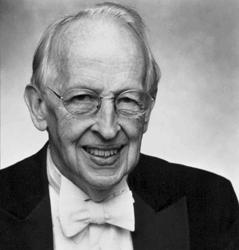
Charles Dodsley Walker, 94, died in New York City on January 17. At the time of his death he was the conductor of the Canterbury Choral Society and organist and choirmaster emeritus of the Church of the Heavenly Rest in New York City, and the artist-in-residence of St. Luke’s Parish, Darien, Connecticut. During his career Walker held numerous positions, including at the American Cathedral in Paris, St. Thomas Chapel, and the Church of the Heavenly Rest in New York City, the Berkshire Choral Institute, Union Theological Seminary School of Sacred Music, Manhattan School of Music, and New York University. A Fellow of the American Guild of Organists, he also served as president of the AGO from 1971–75.


